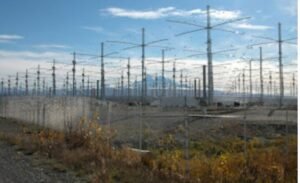Can Scientists Control the Northern Lights? The Truth About HAARP’s Role

The northern lights, or aurora borealis, have long fascinated humanity with their shimmering, colorful displays in the night sky. These awe-inspiring lights are caused by charged particles from the sun colliding with Earth’s atmosphere near the magnetic poles. But could modern technology, like the HAARP project, actually control or influence these natural phenomena? Let’s separate fact from fiction.
HAARP, short for the High-Frequency Active Auroral Research Program, is a research facility based in Gakona, Alaska. It was originally funded by the U.S. Air Force, Navy, and other government agencies to study the ionosphere — the layer of Earth’s atmosphere that is ionized by solar radiation and critical for radio communication and GPS. HAARP uses a powerful transmitter to send high-frequency radio waves into the ionosphere, temporarily exciting it and allowing scientists to study how it behaves.
This has led to speculation — and conspiracy theories — about HAARP’s capabilities. One of the most persistent claims is that HAARP can manipulate the northern lights or even control the weather. While such ideas have captured the imagination of many, the science behind HAARP tells a different story.
In reality, HAARP can create small, controlled disturbances in the ionosphere, but these are extremely limited in scope and duration. The energy HAARP transmits is tiny compared to the natural forces driving the aurora borealis. In fact, the sun releases millions of times more energy during solar storms than HAARP could ever produce. So while HAARP can create artificial auroras — a faint glow only visible through sensitive cameras — it cannot generate or manipulate the vast natural displays seen during typical auroral activity.
Moreover, the auroras caused by HAARP are not visible to the naked eye and occur in a much smaller region than natural northern lights, which can stretch across thousands of kilometers. These artificial auroras are used to study how particles and radio waves interact in the upper atmosphere, providing valuable data for improving satellite communications, navigation systems, and understanding space weather.
So, what’s the surprising truth? While HAARP can interact with the ionosphere and even create minor auroral effects under specific conditions, it cannot control the natural northern lights. The phenomenon remains largely driven by the sun and Earth’s magnetic field — forces far beyond human influence.
Despite the myths and internet rumors, HAARP is a scientific tool, not a weather or aurora manipulation weapon. Its true value lies in helping scientists better understand the dynamics of our upper atmosphere, which in turn supports advances in technology and communication.
In short, the northern lights remain one of nature’s most beautiful and uncontrollable displays — a vivid reminder of the power of our planet and the sun, untouched by even our most advanced technology.
